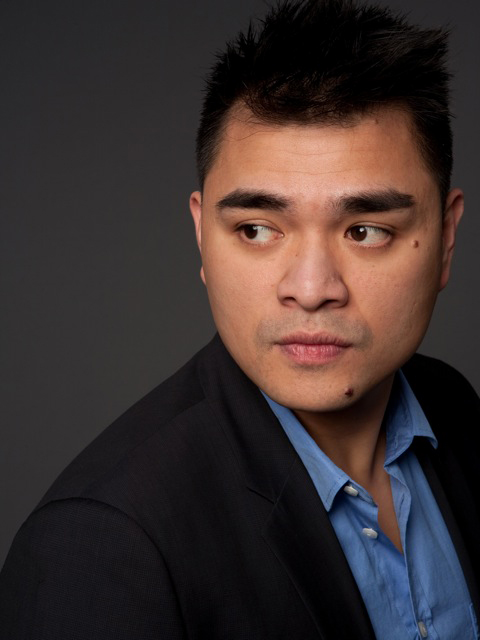Here we have a documentary about the city of Washington, D.C that doesn't show the political side of town. At all. The political side would be the one depicted by the 7-year NBC-TV series West Wing. This film, The Other City, takes us to a D.C. that gets no attention but which is fascinating nonetheless. It is relevant to know that 3% of the population of D.C. is HIV positive, equivalent to the rates in Uganda and Kenya. That's one out of 33 people. Many are women and children. The film's writer, Jose Antonio Vargas, a Huffington Post editor, said the filmmakers wanted to show the side of D.C. where nothing is staged, where real people are struggling with disease of epidemic proportions, HIV/AIDS. "To me," he said, "politics in speeches and campaigns isn't interesting; it's just theatre, even though I ended up being a political reporter for the Washington Post. Columnist Frank Rich, who speaks in our film, says 'D.C. is a big Hollywood set.'"

Jose Antonio Vargas/Photo by Leslie Hassler
So how does a film like this, which gets right into the faces and homes of the afflicted, get made? "It takes time building trust so people will let you in. I had begun doing that in my first three months in Washington when I was a green intern for the Washington Post. I was a huge fan of West Wing then, in '03. Yet as I explored the city in my first month there, I got an uncomfortable feeling in my stomach. I have always gravitated towards this other part of D.C. that is not part of the D.C. everyone seems to know. I didn't quite understand where the waiters, who were mostly black, lived. I also wondered why they never showed us where West Wing character Charlie Young, President Bartlet's black assistant, lived. Yet his mom in the series was a D.C. cop who got killed in the line of duty. So I walked through neighborhoods, the ghetto, and I rode buses, wondering about all the powerlessness in a city that's supposed to be the most powerful in the world."
Vargas said this was the big theme in his head, and after stumbling upon a document about AIDS in D.C., he began writing about AIDS in those first three months. "This document said D.C. had the highest incidence of new cases of AIDS in the U.S. I did some research into that and figured out that people with little access to health care weren't being tested. So when they got really sick and were finally tested, they already had full-blown AIDS. People with access and some money get tested early. And they can still get medications to take care of what's now termed a chronic disease. And they don't die."

Jose Antonio Vargas/Photo by Leslie Hassler
When Vargas was hired as a reporter for the same paper the following year, he spent three months with one of the characters in the film, Ron Daniels. Daniels is HIV positive. He runs a needle exchange program from his van. Vargas rode in the back of that van while Daniels drove to prearranged stops, swapping dirty needles for clean ones. He saw the faces of those waiting in line at the van stops and learned their names. "I remember telling Ron that I wasn't sure I was mature enough to understand what was going on in front of me. I was 25 then. (He's 29 now.) The gift for me was that I wasn't judgmental. And when stats found that women were showing up with full-blown AIDS, I visited the Women's Collective, formed to help these women. By 2006, I wrote a year-long series on the HIV/AIDS epidemic in Washington."
Fortunately, Susan Koch, award-winning documentarian (Kicking It) read his articles. The subject appealed to her and her Kicking It executive producer, Sheila C. Johnson (philanthropist and founder of BET). They agreed this would be a great subject for their next film, and Koch started trying to reach Vargas.
"Ironically, I got three or four emails from Susan, but I didn't answer them. I didn't know her, and I was away covering John Edwards' campaign around Super Tuesday. But we finally got together in Washington, and when I told her about Ron Daniels, she immediately got in the van with her camera. Now we have so many great scenes of him doing what he does."
Vargas is Filipino. He arrived in the U.S., specifically California, in 1993. He says he was struck by the opposing attitudes of his black and white middle school classmates during the O.J. Simpson trial. Being neither black nor white, he has been very curious about what he terms "America's confused identity." Vargas' college focus was on Black Studies and Political Science. A quote from black poet James Baldwin reflects how Vargas, Koch and Johnson feel about their film: 'When you're discriminating against me, you're really discriminating against yourselves."
Vargas adds, "To me, this film is not just about people who are HIV positive. It's also about learning to recognize the other side of the story and not ignore it. In every city, there's an 'other' city. But the other city is you, right?"
This perception is the one taught by Einstein, the Buddha, the Dalai Lama, Christ, and Martin Luther King, Jr. Their perception is that ignoring people who are different from us and seeing them as "the other" is destructive in the long run. Maybe we can put it this way: when a hole is discovered in the gulf (between us), we'd better find a way to fix it, because if we don't, the issue will eventually wash up on everybody's shores.